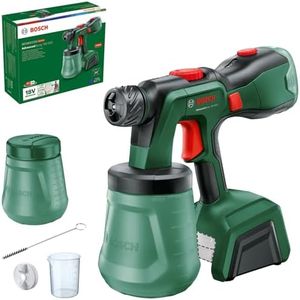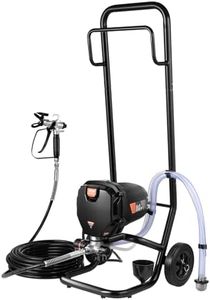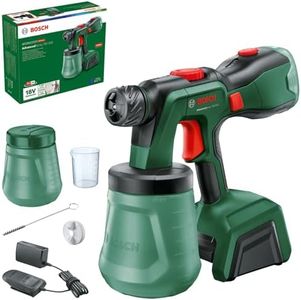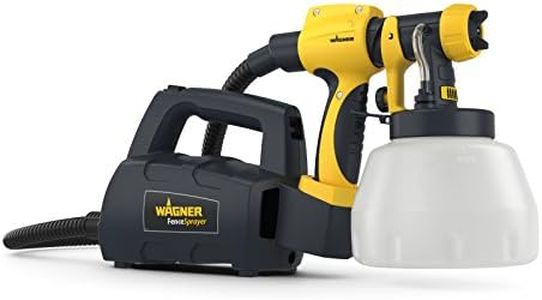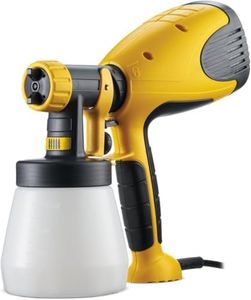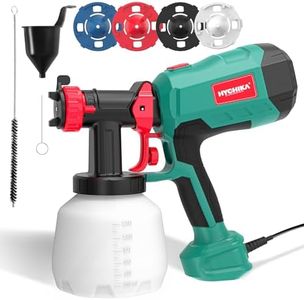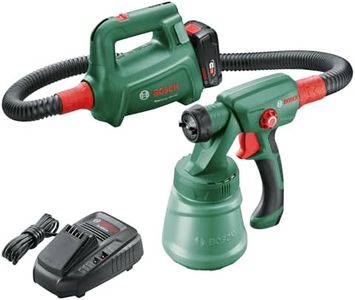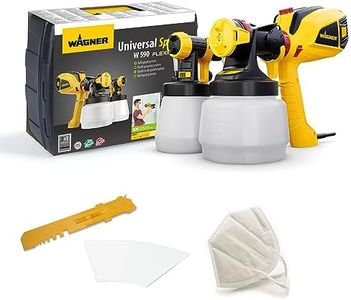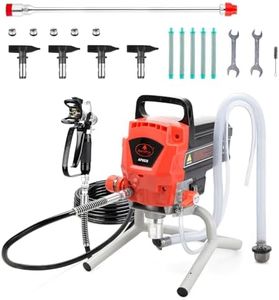We Use CookiesWe use cookies to enhance the security, performance,
functionality and for analytical and promotional activities. By continuing to browse this site you
are agreeing to our privacy policy
10 Best Paint Sprayer For House Exterior
From leading brands and best sellers available on the web.Buying Guide for the Best Paint Sprayer For House Exterior
Choosing the right paint sprayer for painting your house exterior can make a huge difference in how quickly and smoothly your project goes. The ideal sprayer should match the size of your job, the type of surfaces you have, and your comfort level with equipment. Understanding the main features of paint sprayers helps ensure you get even coverage with minimal hassle.Type of SprayerPaint sprayers come in several types, such as airless, HVLP (High Volume Low Pressure), and compressed air sprayers. This spec is important because it determines how paint is atomized and applied. Airless sprayers work quickly and are best for covering large, rough exterior surfaces, while HVLP models are slower but offer more precision and reduced overspray. If you have a big house or rougher surfaces like stucco or brick, airless is often better. For smaller areas or more detailed work, HVLP might be the right choice. Think about the scale of your exterior project and your comfort with different spray speeds and learning curves.
Flow Rate (Gallons Per Minute)Flow rate, measured in gallons per minute (GPM), defines how much paint the sprayer can deliver each minute. This spec matters because a higher flow rate means quicker coverage but can also mean more paint usage. Lower flow rates offer more control but take longer. For large exterior projects, a higher flow rate (around 0.3 GPM or more) can help you finish faster. For smaller homes or more controlled work, something closer to 0.2 GPM may suffice. Consider the size of your exterior surface and how quickly you want the project completed.
Tip Size CompatibilityThe tip size of a paint sprayer controls how much paint is sprayed and how wide the spray pattern is. This impacts the kind of coatings you can use and the finish you achieve. Thicker paints and larger surfaces require bigger tips, while thinner paints and detailed work use smaller ones. If you plan to use thick exterior paints, make sure your sprayer supports larger tips (such as .015 to .021 inches). For more detailed or trim work, smaller tips are best. Match the sprayer's compatibility with the paint types and the areas you intend to spray.
Power SourceSprayers can be powered by electricity, batteries, or gasoline. This matters because it affects portability and convenience. Electric models are common for home use and require an outlet, limiting how far you can move but offering steady power. Battery-powered sprayers are more portable, but may be best for small to medium projects. Gas-powered sprayers are very powerful and best for very large or remote projects. Consider how far you need to move from power sources and the overall scope of your exterior work before deciding.
Ease of Cleaning and MaintenanceA paint sprayer has to be cleaned after each use, so look for models that are designed for easy cleaning. Features like quick flush systems or detachable parts can save time. This is important since dried paint can clog your sprayer, making it work poorly or break down. If you're new to spraying, easy-clean features can make the whole project less stressful and keep your sprayer running longer. Choose a sprayer that matches your willingness to do regular clean-up and maintenance.
Hose LengthThe hose length on a paint sprayer controls how far you can move from the paint source. Longer hoses give you more freedom to reach all areas of your house exterior without frequently moving the main unit. For most exterior house projects, a hose of at least 25-50 feet is helpful, but for multi-story homes, longer hoses keep things convenient. Pick a hose length that suits the size and layout of your project space to minimize downtime.
Adjustable Pressure ControlAdjustable pressure control lets you change how strongly paint is pushed out of the sprayer. This affects coverage, overspray, and finish quality. Lower pressures are helpful for detail work or thinner paints, while higher pressures work better for broad, rough surfaces or thicker paint. If you'll be spraying different surfaces or paint types, look for a sprayer with easy-to-adjust pressure to maximize your control over the job’s outcome.




